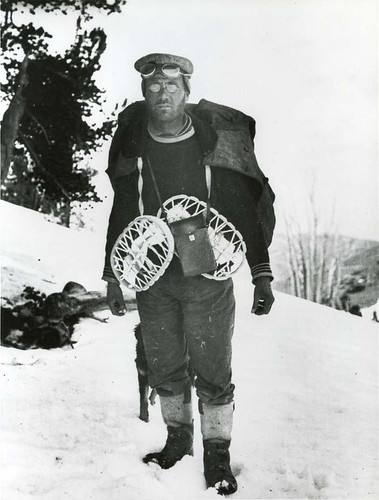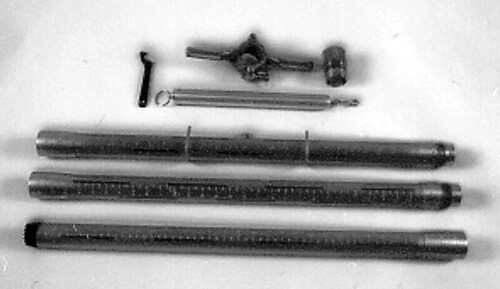
James E. Church was a man who answered his calling. Like a real-life Indiana Jones, Professor Church pursued adventure around the world, ending a war and helping to found the Snow Survey Program on the way. Every hero needs a cause; Church found his in snow.
Born in Michigan in 1869, Church moved west in 1901 to teach classics and art history at the University of Nevada, Reno. The nearby Sierra Nevada fascinated him. He hiked there often, publishing his mountaineering accounts in the Sierra Club newsletter.
Around this time, water uncertainty was causing political friction in Tahoe. Homeowners on the banks of Lake Tahoe were suffering property damage from flooding and demanded that dam operators release water before the snow melted. People living and working downstream opposed this, because that water was their security against a dry spring and summer.
The escalating conflict came to be known as the Lake Tahoe Water Wars. Mark Twain is often attributed with remarking on this conflict, "Whiskey is for drinking. Water is for fighting over."
While his community battled over water levels, Church was working on a solution. Appreciating the relationship between snow and water supply, he knew if he could measure snowpack in surrounding mountains, he could predict how much snowmelt would flow into Lake Tahoe. Such a forecast would empower dam operators to make informed water-planning decisions.

No tool existed to efficiently measure water content in snow, so Church invented one. The Mt. Rose Sampler allowed him to quickly and consistently measure the water content of snow. Church's sampler was so well designed that it's nearly indistinguishable from the modern Federal Sampler currently used by snow surveyors.

Starting in 1908, Church established a series of snow courses on the mountains surrounding Lake Tahoe. He calibrated his forecasts by comparing his measurements against the fluctuating levels of the lake. His method proved so useful it quickly spread across the West. In 1935, Congress formed the Federal-State Cooperative Snow Survey, now known as Snow Survey and Water Supply Forecasting Program of USDA’s Natural Resources Conservation Service.
Church's water supply forecasts helped settle the Lake Tahoe Water Wars, but he was just getting started. He traveled the world as the leading snow survey consultant, presenting at conferences in Europe, setting up snow courses in the Himalayas, advising hydrologists in the Soviet Union and India. Scientists who studied under him became known as Church's Boys. They were the first generation of snow surveyors.
Since the days of Church and his Boys, snow survey has continued to expand and advance. Manual snow courses are steadily being augmented or replaced by automated SNOTEL sites. NASA has recently gotten involved, measuring snowpack from above. Water supply forecasts remain as valuable today as during the Lake Tahoe Water Wars.
Western water management is tricky terrain, but thanks to Dr. Church, the West isn’t blindfolded.
Check out the March water supply forecast to see the latest snowpack information.

